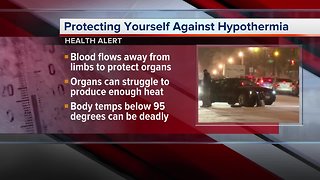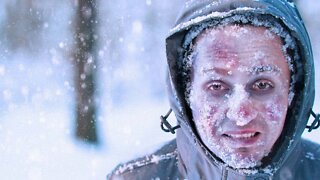How Fast Can You Get Frostbite?
How Long Does It Take to Get Frostbite? Frostbite Is Much Harder to Contract if You Know How to Prevent It. The likelihood of contracting frostbite depends on several key factors, notably temperature, clothing, time spent outdoors, activity level, age, and even body type. Obviously, the colder the weather, the greater the likelihood of contracting frostbite. But you can't entirely rely on what the mercury says. Your standard household thermometer doesn't pick up on wind chill, a meteorological phenomenon that can turn a glorious winter wonderland into a frozen wasteland with a simple gust of wind.
To anyone who's never experienced wind chill, imagine being slapped in the face multiple times. Not only does it feel unpleasant, but wind chill speeds up body heat loss wherever skin is exposed, and thus contributes to an increased frostbite risk. That's why winter weather reports often involve two temperatures, the one with and the one without wind chill. For example, it might be -10°C (14°F) outside, but if it's windy enough, it could feel more like -20°C (-4°F).
Dress appropriately for the weather and limited will your frostbite risk be, a vague if completely useless statement if there ever was one.
Once you know how cold it is with the wind chill and are properly dressed for the weather, then you need to figure out how long you expect to be outside.
According to Environment Canada, risk of frostbite is fairly minor when temperatures range from -10°C to -27°C (14°F to -16.6°F). But risk increases considerably when temperatures dip below that range.
For example, temperatures with or without wind chill ranging between -28°C (-18.4°F) and -39°C (-38.2°F) can lead to frostbite IF skin is exposed for anywhere from 10 to 30 minutes. Below -40°C (-40°F) can lead to frostbite in under 10 minutes. Below -55°C (-67°F)? Two minutes or less is all is takes for tissue damage if not dry and bundled up properly.
Of course, spending 30 minutes ice skating or skiing will heat up your body much more than standing around the same amount of time waiting for the bus. According to podiatric sports medicine doctor Stephen M. Pribut, someone running outside should figure that they'll feel about 6°C (20°F) warmer than if they were standing still. But if it's windy outside, watch out. Wind chill could feel even more intense if you're moving fast, like say, speeding down a mountain on skis.
Other factors to consider include age (infants lose heat faster than adults), health (diabetics suffer from poor circulation and are thus more vulnerable), and body characteristics (someone who is tall and willowy will lose body heat faster than a short and stocky individual).
Music: From Scales To Feathers (Thirsty Lizard Mix) by Dhruva Aliman
Amazon- https://amzn.to/2Mgr7pg
https://music.apple.com/us/artist/dhruva-aliman/363563637
https://dhruvaaliman.bandcamp.com/album/the-wolf-and-the-river
http://www.dhruvaaliman.com/
Spotify - https://open.spotify.com/artist/5XiFCr9iBKE6Cupltgnlet
-
 3:29
3:29
Dude does stuff
3 years ago $0.01 earned“I’m gonna get frostbite!”
1041 -
![[ Frostbite ]](https://hugh.cdn.rumble.cloud/s/s8/6/i/1/6/O/i16Oo.0kob.jpg) 5:31:12
5:31:12
Wauln
5 months ago[ Frostbite ]
107 -
 8:27
8:27
Xnoob95X
7 months agoHow To Get Frost
1 -
 6:52
6:52
Mr_Derp
1 year agoDESTINY 2!! FROSTBITE ISNT FAIR!!
-
 1:02
1:02
WXYZ
5 years agoHow to avoid frostbite and hypothermia in frigid weather
6 -
 0:11
0:11
Matthew Harb, MD
2 years agoFrostbite
-
 4:49
4:49
How to Survive
2 years agoHow to Survive Frost Bite
1.36K5 -
 0:45
0:45
Tonydemenez
1 year agoSmooth Frost
-
 2:02
2:02
vogeslakeshia365
1 year agoAvoiding frostbite, other cold-related injuries in frigid weather
7.79K -
 4:21
4:21
DanTheMountainDewMan
2 years agoMountain Dew Frost Bite!
14